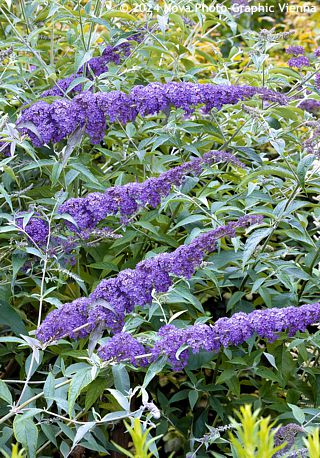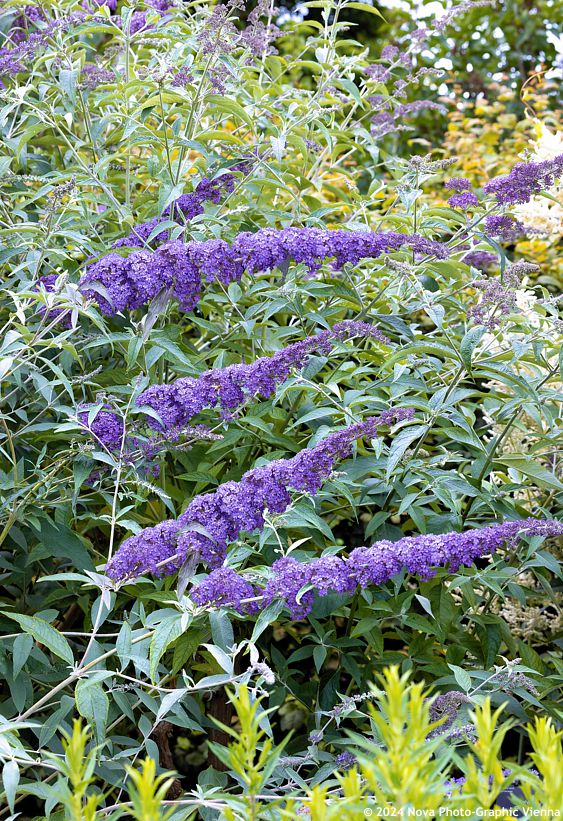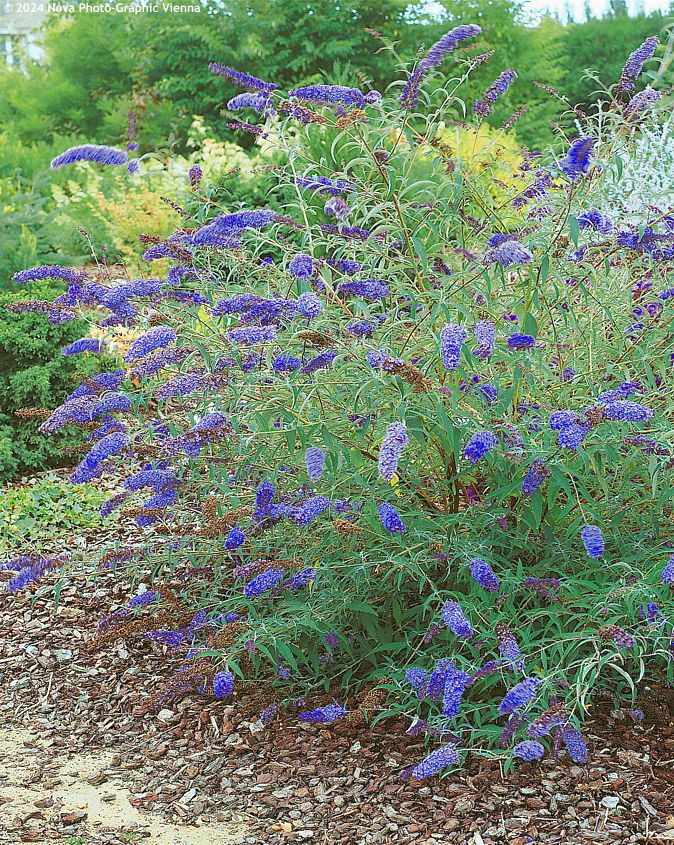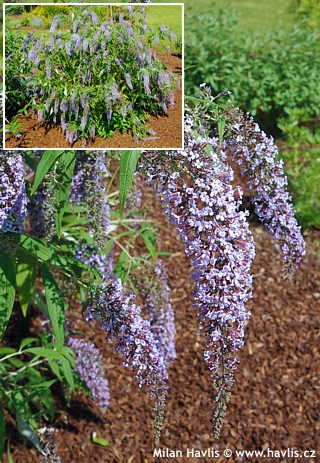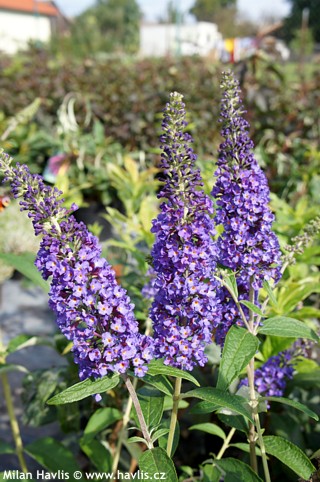Buddleja davidii 'NANHO BLUE' butterfly bush, buddleja


Buddleja
Buddleja, better known as the butterfly bush, gets its name for an obvious reason. From early summer, when it starts blooming, until early autumn, it produces large, scented flowers that attract winged insects, mostly butterflies. Its Latin name honours the French missionary and botanist Jean-Pierre-Armand David (1826-1900), but the shrub was first discovered by the British plantsman and sinologist Augustine Henry around 1887 near the city of Yichang in eastern China. The species is a robust shrub that can grow up to 5 meters, and its seeds' vitality has led to it being listed as an invasive plant in some countries. Consequently, only modern cultivars, which are much smaller and non-invasive, are selected for horticulture. Its ability to colonize empty and often barren spaces earned it the nickname "the bomb site plant", because after World War II, it quickly spread in dry and infertile areas devastated by bombing. Ironically, in 1941, it received the prestigious AGM (Award of Garden Merit) from the Royal Horticultural Society (RHS) for its beauty and reliable performance.The deciduous leaves are narrowly lanceolate, opposite, finely hairy, medium green on the upper side, and silvery underneath. The shrub grows relatively fast, forming dense shrubs with arching branches and an overall height and width of around 1.5 meters. It is recommended to prune it back to a strong framework each spring by removing up to 80% of the previous year's branches when the buds begin to swell. It regrows reliably and quickly, and such rejuvenation will result in a nice shrub with lush foliage, abundantly flowering over a long period. The flowering time and number of flowers can be enhanced by regular deadheading to prevent it from making seeds.
Butterfly bush is not demanding to grow. It needs to be planted in full sun in moderately fertile, well-drained soil, as it could rot in winter if kept too wet. It is hardy to approximately -29 °C (USDA zone 5), but it does better in warmer regions. In colder regions, plant older specimens with matured wood. Though, Nanho Blue was tested in cooler areas of Canada and has demonstrated hardiness down to -32°C as a perennial, able to regenerate from the base each year and bloom in a good summer.
Last update 13-12-2024
Goods are shipped all over Europe. For Russia and U.K. and for further details please read about SHIPPING OPTIONS HERE.
Are you interested in a serious discount for orders NOV-FEB? Check your options here.
THE PRICES INCLUDE VAT of 15%. For quick conversion you can use 1 CZK = approx. 0.04 EUR
- STANDARD QUALITY - Plants of this group are 1st class quality with number of branches and overall density adequate to their size and age, considering they were container grown.
- DE LUXE QUALITY - This label guarantees a luxurious quality of manually selected plants that, compared to their height and age, are exceptionally dense and beautiful.
- EXTRA - These plants are usually mature and bigger specimens with exceptional overall appearance.
- STANDARD (as described in the plant form) means a tree with a trunk of 190-210 cm and a crown at the top, unless specified differently. The commercial size for trees is their girth measured in the height of 1m from ground.
- HOBBY - These plants are of the same quality as our standard-quality plants but younger and therefore cheaper.
- SHRUB - a woody plant with branches growing bushy from the ground level.
- HALF-STANDARD or MINI-STANDARD - a small tree with shorter trunk, its size is usually specified.
- FEATHERED - These are trees with branches growing already from the base of the trunk and up along the stem.
- GRASSES and PERENNIALS - Sizes given usually read the diameter of the pot or the clump, as specified.












